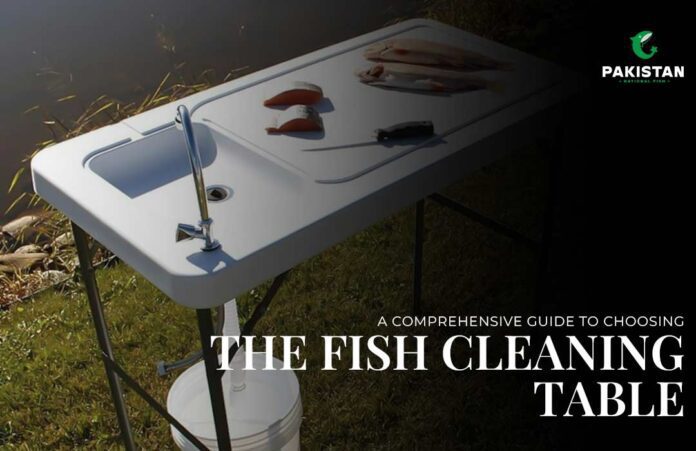Nothing makes you feel more satisfied than eating fish that you have caught and prepared yourself. However, there’s no greater discomfort than having to clean your fish on a problematic or dangerous surface. It’s time to get a fish cleaning table or something a little more practical in place of the cutting board and other fishing material. We have all the information you might need if we’ve sparked your curiosity.
Continue reading this blog to learn everything you need to know about selecting a fish cleaning table.
Why You Need a Portable Fish Cleaning Table?
Fishing becomes more efficient and hygienic when you have a portable fish cleaning table. They provide you the ability to fillet and descale fish right after you catch them, so you can do it outside while still dirty.
This eliminates the need for you to clean them at home, saving you from having to deal with the scales, intestines and other fish parts in your driveway or sink. While you are still outside, you may fully fillet the fish and bag it, ensuring that you have neatly sliced fish ready to cook when you arrive home.
Factors to Consider When Buying Fish Cleaning Table

1. Material and Durability
Since your fish cleaning table will be exposed to the water for extended periods of time, you want to make sure it is made of high-quality materials that can withstand the harsh conditions.
Seek for fish table made of UV stabilised, compression moulded, high-density polyethene that is nearly unbreakable, or stainless steel that is resistant to rust. Our first choice for fillet tables is high-density polyethene since it doesn’t break, peel, mildew, absorb bacteria, or smell like fish.
2. Portability
3. Size
4. Drainage
5. Ease of Cleaning
The last thing you want to do after a demanding day on the water is a challenging clean-up task. Select a fish cleaning table with a minimal number of attachments and crevices that may require extensive disassembly in order to thoroughly clean. The ideal fillet table cleans up nicely with a strong jet nozzle spray from outdoor water.
Fish Cleaning Table Safety Tips
Although the best fish table is designed to give you a firm surface on which to use knives, we strongly advise you to always use your fish cleaning table with safety in mind. Here are some guidelines:
- Make sure your table is stable: Make sure there is no swinging or unevenness when assembling a portable table or installing a dock-mounted station. Aside from making sure all mounting brackets are firmly in place, avoid positioning your table on an uneven surface.
- Select the appropriate leg count: Fish tables come in a range of sizes, shapes, and leg arrangements. You could be able to put a portable 2-legged table in your sedan, but it won’t work for swordfish fishing.
- Don’t skip final cleaning: Your table may appear clean, but there are microscopic cracks and knife snags that might be home to bacteria. When the day is over, always completely clean your fish table and use an antibacterial cleaner that is suitable for food.
Conclusion
In conclusion, buying the proper fish cleaning table can improve your fishing experience significantly by simplifying and hygienizing the process of cleaning your catch. You can make sure that the table you choose fits your demands by taking into account aspects like size, portability, drainage, durability of the material, and simplicity of cleaning. Furthermore, maintaining a clean and safe work area will enable you to fully savour the thrill of processing your newly caught fish.


